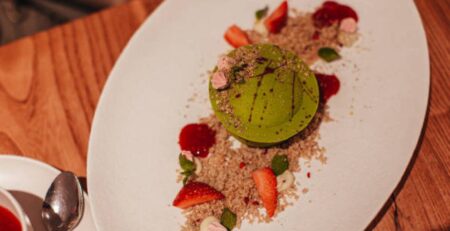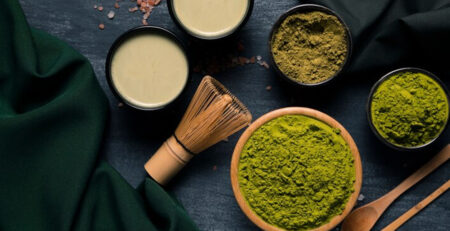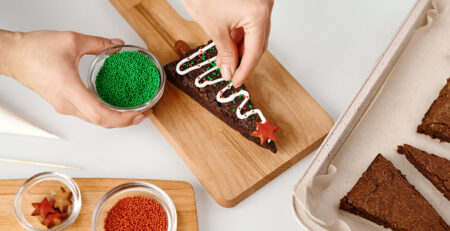Why Do Bakers Prefer Oil-Based Color Over Water-Based For Icing Fondants And Macarons? Learn The Difference
If you have dabbled into the world of baking, even for a short while, you may have noticed that bakers may prefer using oil-based food coloring over water-based ones. Although it may seem inconspicuous, this key detail can make all the difference when it comes to a vibrant-looking cake or macaron.
In this blog, we find out the answer to the oil-based vs. water-based food coloring debate and why bakers prefer a specific type of food coloring. Let’s get started on your own journey through the colorful world of baked goods!
What Are Oil-Based Food Coloring?
Oil-based food colors work well with chocolates and hard candy. When it comes to oil-based vs. water-based food color, oil blends are highly pigmented and dissolve well in thick and creamy desserts.
The reason why they are so revered even after the relatively higher price point than water-based food coloring is that these dyes easily emulsify with fatty-acid-containing mediums. Plus, adding water-based food coloring will not emulsify the fat and also mess up the consistency of the dessert you are trying to make.
When Can You Use Oil-Based Food Coloring?
This type of dye works best with ingredients rich in fats like butter, chocolate, fondant, cake batter, ganache, and buttercreams.
How To Use Oil Blends In Desserts?
Oil blends can easily be mixed in with your ingredients. You need to be careful when adding this type of dye as it is very easy to add too much.
They are extremely pigmented and take time to show their results, so make sure that you are consistently mixing your desserts when using them. Since water and oil do not mix well, remember not to use these dyes when working with water-based desserts.
What Are Water-Based Food Coloring?
Much like its name, water-based food coloring has a watery consistency and very dull color upon application.
Although it has a wide variety of vibrant colors, it is not that pigmented and may not work well in a lot of mediums. However, there are many applications where water-based or aqua-blend coloring may have the upper hand as if used excessively, oil-based coloring can make macarons crack.
When Can You Use Water-Based Food Coloring?
This type of food dye only works well with light and airy desserts like jellies, meringues, beverages, and macarons.
How To Use Water Blends In Desserts?
You can also add your aqua blends into your desserts directly while mixing until you reach the desired color and consistency. You need to be extra careful, as adding too much can result in an overly watered-down dessert, which will completely ruin the taste.
Oil-Based Vs. Water-Based Food Coloring: Which Is Better?
1. Availability
When it comes to availability, water-based food coloring takes the cake, being readily available in every single grocery store and supermarket. Meanwhile, oil blends are only sold at baking essentials online stores like Cake Craft UAE.
2. Pastel Aesthetics
It is very easy to make pastel colors with any type of water-based food coloring. However, oil-based dyes tend to also have specific pastel colors that help you highlight your desserts better than aqua-blends.
3. Color Concentration
The color concentration in oil-based colors is very high as compared to water-based food dyes. Mixing in even a drop of oil blends could color an entire bowl of whipped cream, while an aqua-blend may take five to six drops. For a deeper color, you need to add more water-based colors, which can disrupt the consistency and flavor profile.
4. Longevity
Due to being used in low amounts, oil-based food colors tend to last longer than water-based food colors.
5. Affordability
Water blends are a lot more affordable than oil blends, which is why many beginners end up using them, but as you use these dyes, you may find out that their low price point is not worth the effort.
On the other hand, oil blends tend to have a higher price point, but their quality and color concentration more than makeup for it.
6. Maintaining Consistency
The consistency of a dessert plays a vital role in its flavor profile. The type of dye used can impact the dessert consistency. When you use an aqua-blend food dye, it tends to water it down where, whereas oil-based blends do not affect the consistency at all.
7. Solubility
Oil blends, as the name suggests, easily dissolve in oil-based ingredients with fats, whereas water blends only dissolve in water-based ingredients.
A good example of this is that oil-based food dyes dissolve easily in butter and chocolate, while water-based dyes dissolve easily in jellies and meringues without emulsifying.
8. Easy Mixing/Blending
Although oil blends are highly pigmented, they are harder to blend out and take a long time to mix in. On the other hand, water-based colors are not as pigmented and can be mixed in various desserts easily due to their watery consistency.
9. Taste Profile Alteration
Oil-based dyes are not needed as much and thus do not end up altering the flavor profile of the dessert. However, the water-based dyes need to be used in a relatively larger quantity and thus may end up changing the flavor profile of your dessert, so you need to be careful when using them excessively.
What Is The Preferred Food Coloring Of Bakers?
The stamp of approval of bakers is preferred to oil-based food coloring. The reasons for this are clear. Oil-based food dyes last longer, do not alter the flavor profile, are highly pigmented, and have a large variety of colors available.
Conclusion
While both oil-based and water-based food coloring have their own advantages and disadvantages, it’s important to understand which type of dye works best for specific desserts.
For rich and creamy desserts like buttercream and ganache, oil-based dyes are the way to go due to their high pigmentation and ability to dissolve in fatty-acid-containing mediums. On the other hand, water-based dyes are better suited for light and airy desserts like jellies, macaroons, meringues, and beverages. So, the next time you’re baking, keep in mind the differences between oil-based vs. water-based food coloring and buy the right type of dye from Cake Craft UAE, the best online shop for baking tools and ingredients, to make your desserts truly stand out!












